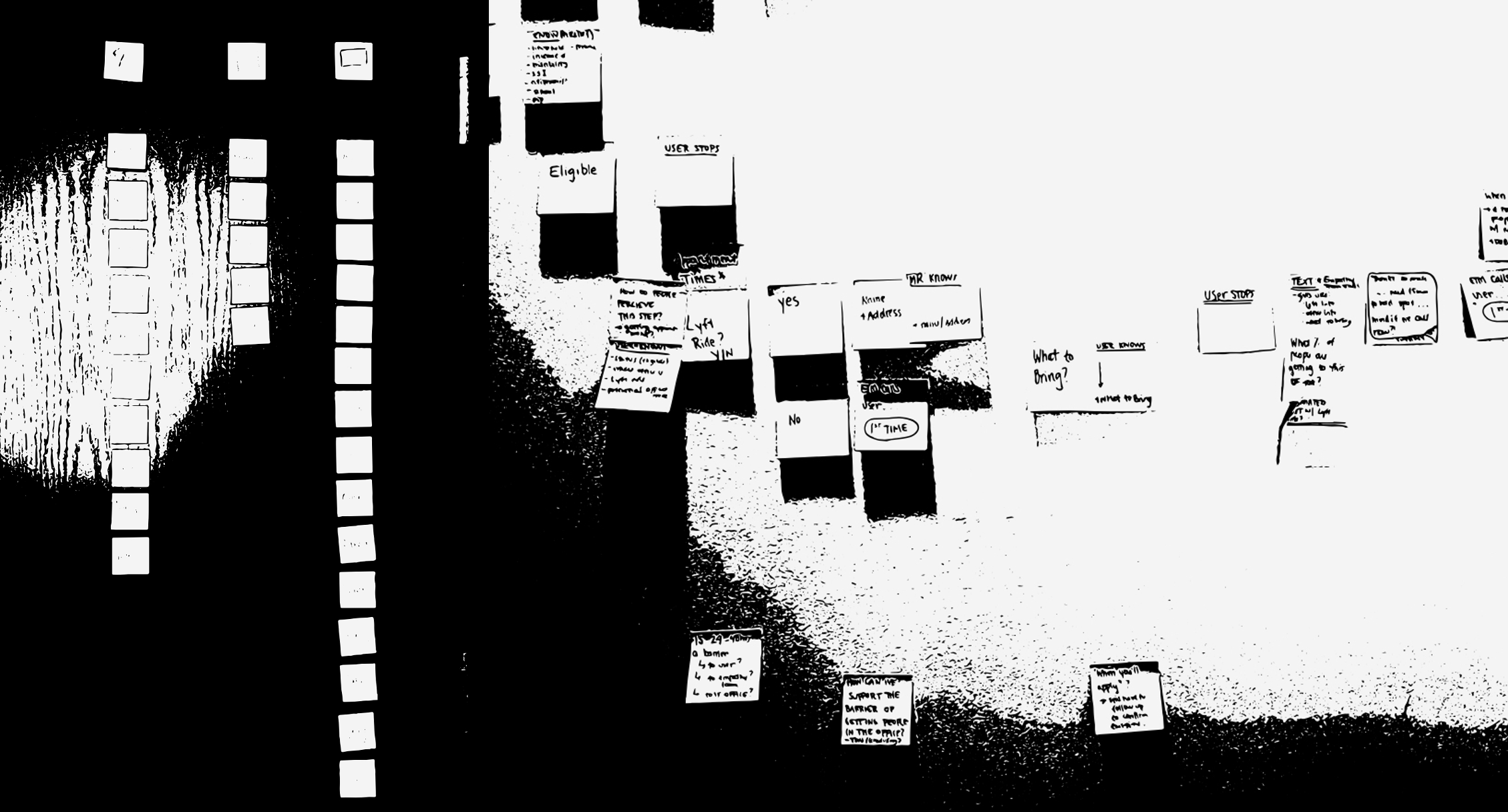
Navigating Supplemental Nutrition Assistance Program (SNAP) benefits in San Francisco
How might we better support SNAP applicants using the mRelief platform?
Collaborators
the mRelief Empathy team
Context
Through a short SMS messaging platform, mRelief helps people know if they qualify for Supplemental Nutrition Assistance Program (SNAP) benefits throughout the U.S. In California, only half of the households eligible for SNAP are receiving benefits. In San Francisco, 1 in 4 individuals struggle with hunger. The application process involves an in-person interview, series of document checks, and a lengthy paper-based application. In 2017 mRelief worked in San Francisco to shorten this process through an online application platform and one-on-one support.
In 2017, more than 50% of people who found out they qualified for SNAP through mRelief were still not receiving benefits. We asked, “What barriers keep eligible people from receiving SNAP benefits in San Francisco? How might we design a better process for SNAP applicants using the mRelief platform?”
Approach
Our team worked daily with SNAP applicants, providing direct technical support. This involved explaining the required documents, assisting individuals in completing the application, and arranging Lyft transportation to ensure accessibility to benefits offices.
We found that users had a lot of hesitation in going to apply for benefits, feeling uncertain of what documents they would need, what the application office would be like, what an interview would entail, and how they would get to and from the office.
Seeking in-depth understanding of users’ experience without place-based observation was challenging. However, being a part of their application process, through phone calls and texts, was vital to understanding the complexities of the SNAP application processes. Empathy and patience played an important role in this project. Taking the time to listen to users’ stories and experiences outside of their SNAP experience.
mRelief User Journey
Listening SNAP applicant’s stories helped us see barriers in the mRelief process.
“I didn’t think I had the right documents to submit online. I also feel like there is someone poorer than me, so I don’t need it. I found the courage to do this because someone I know told me about it.”
"Because I don't have any pay stubs they don't have any proof of what I was telling them. I got the CalFresh card, but I’m still worried I will owe money.”
“I was hesitant to go - I’m disabled and it’s hard to get around. On top of that my experience in the social services office hasn’t been great, people are rude in the office”
Synthesizing affinity diagramming, storyboards, user mapping, and personas we developed a set of recommendations for mRelief’s platform:
Increase User Knowledge of the mRelief Process
Users experienced varying levels of confusion in the application process. Often users did not complete an application because they had to go to work, pick up kids, or were not prepared with the correct documents.
We suggest increased transparency around:
what documents were needed and why - users wanted to know why so much information was needed in their application process.
what the wait time in the office would look like - users often had competing priorities that limited their time.
what the ‘interview’ would entail - an interview was often intimidating for users and was be a barrier for going into the office.
Phone and Text Encouragement
Emotional support from the mRelief team was the difference for some applicants between completing an application and not. We suggested further mRelief staff training in empathy focused calls and how to handle tough situations with compassion.
Communication with the CalFresh Office
CalFresh caseworkers juggle a lot under intense circumstances which has negative impacts on a user’s experience when in the CalFresh office. Working to better understand how to make the CalFresh caseworkers workflow easier, with a focus on empathy, would reduce stress on users and may increase the number of benefits received.
Decrease the Need for Transportation
A main hangup for many users was getting to and from the CalFresh office - oftentimes missing their interview and not receiving benefits. Eliminating this step through online document submission and phone based interviews would reduce user logistic challenges.


